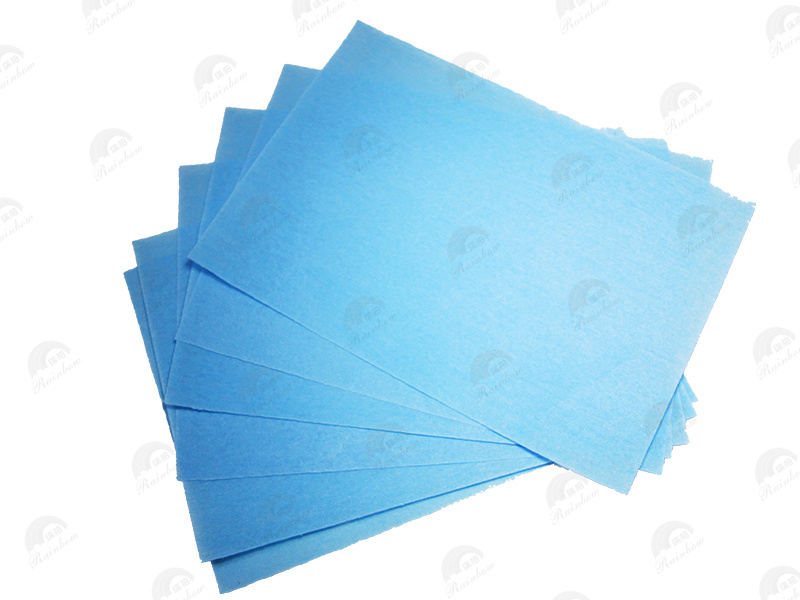How Sterilization Wrap Nonwoven Fabric Ensures Safety in Medical Environments
Release time:
2025-06-09
How Sterilization Wrap Nonwoven Fabric Ensures Safety in Medical Environments
Introduction to Sterilization Wrap Nonwoven Fabric
In today's fast-paced medical environments, ensuring the highest level of safety and sterility is paramount. **Sterilization wrap nonwoven fabric** serves as a fundamental component in maintaining hygiene standards within healthcare settings. This specialized material is engineered to protect sterile equipment and supplies from contamination during storage and transport, ultimately enhancing patient safety.
Understanding Nonwoven Fabric
What Is Nonwoven Fabric?
Nonwoven fabric is a textile made from fibers that are bonded together through chemical, mechanical, heat, or solvent treatment. Unlike woven fabrics, which are made by interlacing threads, nonwoven fabrics are produced by directly bonding fibers, resulting in a versatile material suitable for various applications, including medical use.
Characteristics of Nonwoven Fabric
Nonwoven fabrics exhibit several key characteristics that make them ideal for medical environments:
- **Breathability:** Allows gases and moisture to pass through while providing a barrier against contaminants.
- **Strength and Durability:** Designed to withstand the rigors of sterilization processes, ensuring longevity and reliability.
- **Lightweight and Flexible:** Easy to handle and conform to various shapes and sizes of medical instruments.
The Importance of Sterilization in Healthcare
Why Sterilization Matters
Sterilization is the process of eliminating all forms of microbial life, including bacteria, viruses, and fungi, from medical instruments and surfaces. This process is critical in preventing healthcare-associated infections (HAIs), which can pose serious risks to patients.
Common Sterilization Methods
Several methods are employed to achieve sterilization, including:
- **Steam Sterilization (Autoclaving):** Utilizes high-pressure steam to kill microorganisms.
- **Ethylene Oxide (EtO) Sterilization:** Employs gas to sterilize heat-sensitive medical equipment.
- **Radiation Sterilization:** Uses gamma rays or electron beams to eliminate pathogens.
How Sterilization Wrap Nonwoven Fabric Works
Structure and Composition
Sterilization wrap nonwoven fabric is typically composed of synthetic fibers like polypropylene or polyester, which provide excellent barrier properties. The material’s structure is designed to allow for proper steam penetration while preventing the ingress of contaminants.
Barrier Properties of Sterilization Wrap
The effectiveness of sterilization wrap relies on its barrier properties, which include:
- **Microbial Barrier:** Prevents bacteria and other pathogens from penetrating the wrap.
- **Liquid Resistance:** Protects sterile contents from moisture and liquid contamination.
- **Ventilation:** Allows gases to escape during the sterilization cycle, ensuring thorough processing.
Applications of Sterilization Wrap Nonwoven Fabric
Healthcare Settings
Sterilization wrap nonwoven fabric is widely used in various healthcare settings, including:
- **Hospitals:** For wrapping surgical instruments and medical devices before sterilization.
- **Outpatient Clinics:** Ensuring that all instruments remain sterile until they are needed.
- **Dental Offices:** Protecting tools and equipment from contamination.
Veterinary Medicine
Veterinary clinics utilize sterilization wrap nonwoven fabric for similar purposes, safeguarding surgical instruments and ensuring patient safety in animal healthcare.
Benefits of Sterilization Wrap Nonwoven Fabric
Enhanced Patient Safety
Using sterilization wrap nonwoven fabric significantly reduces the risk of HAIs, protecting patients during surgical procedures and medical treatments.
Cost-Effectiveness
While the initial investment in high-quality sterilization wrap might be higher, the long-term savings resulting from reduced infection rates and improved patient outcomes make it a cost-effective choice for healthcare providers.
Environmentally Friendly Options
Many manufacturers are now producing biodegradable nonwoven fabrics, allowing healthcare facilities to maintain hygiene standards while minimizing their environmental impact.
Choosing the Right Sterilization Wrap Nonwoven Fabric
Considerations for Selection
When selecting sterilization wrap nonwoven fabric, healthcare providers should consider the following factors:
- **Material Composition:** Ensure the fabric meets the necessary regulatory standards for healthcare use.
- **Barrier Properties:** Confirm the fabric provides adequate protection against microorganisms and liquids.
- **Compatibility with Sterilization Methods:** Choose a wrap that is compatible with the sterilization method utilized in your facility.
Recommended Practices for Use
To ensure optimal performance, healthcare providers should follow these practices:
- **Proper Wrapping Techniques:** Utilize standardized wrapping methods to maximize coverage and minimize potential contamination.
- **Regular Training:** Provide ongoing education for staff on the importance of proper sterilization practices and the use of nonwoven wraps.
Challenges and Solutions in Sterilization Wrap Use
Common Challenges
Despite their advantages, the use of sterilization wraps can present challenges, including:
- **Tear Resistance:** Nonwoven fabrics may be susceptible to tearing if not handled properly.
- **Cost Variability:** The price of high-quality sterilization wrap can vary, impacting budget considerations.
Innovative Solutions
To address these challenges, manufacturers are continuously innovating. Enhanced tear-resistant materials and bulk purchasing options can help healthcare facilities mitigate costs and improve durability.
Frequently Asked Questions (FAQs)
1. What is sterilization wrap nonwoven fabric made of?
Sterilization wrap nonwoven fabric is typically made from synthetic fibers such as polypropylene or polyester, designed to provide excellent barrier properties while allowing for sterilization.
2. How does sterilization wrap prevent contamination?
The fabric's microbe-resistant properties and structure ensure that bacteria and other pathogens cannot penetrate, while also allowing gases to escape during the sterilization process.
3. Can sterilization wraps be reused?
No, sterilization wraps are intended for single-use only to ensure maximum sterility and minimize the risk of contamination.
4. What are the best practices for using sterilization wrap in a medical setting?
Best practices include proper wrapping techniques, regular staff training on sterilization protocols, and adherence to sterilization method compatibility.
5. Are there environmentally friendly options for sterilization wrap?
Yes, many manufacturers now produce biodegradable sterilization wraps that maintain hygiene standards while being more environmentally responsible.
Conclusion
In conclusion, **sterilization wrap nonwoven fabric** plays an integral role in ensuring safety within medical environments. Its unique properties and applications make it an essential component in the fight against healthcare-associated infections. By understanding its importance and choosing the right products, healthcare providers can significantly enhance patient safety, reduce infection rates, and maintain high standards of hygiene. As the industry evolves, embracing advancements in sterilization wrap technology will allow for continued improvements in medical safety and efficacy.
Sterilization Wrap Nonwoven Fabric
Previous Page
Previous Page
Latest News
Nantong Rainbow Technology Co., Ltd.
Telephone:+86-13587673537
E-mail:chrislc717@163.com
Address: Group 42, Xizansi Village, Xiting Town, Tongzhou District, Nantong City, Jiangsu Province

Copyright©2024 Nantong Rainbow Technology Co., Ltd. | Powered by www.300.cn
Copyright©2024 Nantong Rainbow Technology Co., Ltd.
Powered by www.300.cn





